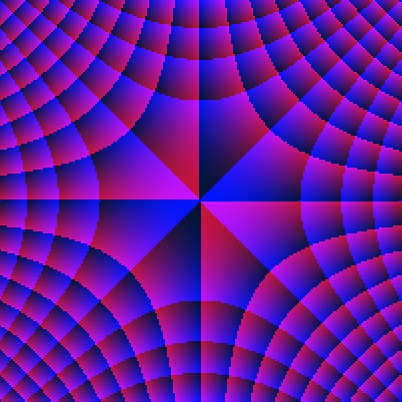8.6.1 定理:非負既約行列に対する一般的な極限定理
\( A \in M_n \) が既約かつ非負行列であり、\( n \ge 2 \) とする。また、\( x \) および \( y \) をそれぞれ \( A \) の右ペロンベクトルおよび左ペロンベクトルとする。このとき次が成り立つ。
\lim_{N \to \infty} \frac{1}{N} \sum_{m=1}^{N} (\rho(A)^{-1} A)^m = xy^T
さらに、ある有限の正の定数 \( C = C(A) \) が存在して、すべての \( N = 1, 2, \ldots \) に対して次の不等式が成り立つ。
\left\| \frac{1}{N} \sum_{m=1}^{N} (\rho(A)^{-1}A)^m - xy^T \right\|_{\infty} \le \frac{C}{N}
証明
まず \( A \) が原始行列(primitive)である場合を考える。このとき、\( \rho(A)^{-1}A \) は式 (8.2.7a) のように分解でき、\( x \) は \( S \) の第1列、\( y \) は \( S^{-1} \) の第1列である。したがって次が成り立つ。
\frac{1}{N} \sum_{m=1}^{N} (\rho(A)^{-1}A)^m
= S \begin{bmatrix} 1 & 0 \\ 0 & \frac{1}{N} \sum_{m=1}^{N} B^m \end{bmatrix} S^{-1}
ここで \( \rho(B) \lt 1 \) であるため、前節の演習問題により
\frac{1}{N} \sum_{m=1}^{N} (\rho(A)^{-1}A)^m
\to S \begin{bmatrix} 1 & 0 \\ 0 & 0_{n-1} \end{bmatrix} S^{-1} = xy^T
次に、\( A \) の最大固有値の絶対値をもつ固有値がちょうど \( k \gt 1 \) 個ある場合を考える。このとき、\( \theta = 2\pi / k \) とおく。系 8.4.6(c) より、\( \rho(A)^{-1}A \) の最大絶対値固有値は \( 1, e^{i\theta}, e^{2i\theta}, \ldots, e^{(k-1)i\theta} \) であり、それぞれ単純固有値である。
したがって、ある可逆行列 \( S \in M_n \) が存在して、\( x \) がその第1列、\( y \) が \( S^{-1} \) の第1列であり、次のように表せる。
\rho(A)^{-1}A = S \big([1] \oplus [e^{i\theta}] \oplus \cdots \oplus [e^{(k-1)i\theta}] \oplus B \big) S^{-1}
ここで \( B \in M_{n-k} \) かつ \( \rho(B) \lt 1 \) である。前の演習の結果より、
\frac{1}{N} \sum_{m=1}^{N} (\rho(A)^{-1}A)^m
= S \big( [1] \oplus [\lambda_{1,N}] \oplus \cdots \oplus [\lambda_{k-1,N}] \oplus \mathcal{B}_N \big) S^{-1}
ここで各成分は次のように与えられる。
\begin{array}{ccc}
\lambda_{1,N} & = & \frac{e^{i\theta} - e^{i(N+1)\theta}}{N(1 - e^{ij\theta})} \to 0 \quad (N \to \infty) \\
\vdots & \vdots & \vdots \notag \\
\lambda_{k-1,N} & = & \frac{e^{i(k-1)\theta} - e^{i(N+1)(k-1)\theta}}{N(1 - e^{ij\theta})} \to 0 \quad (N \to \infty)
\end{array}\mathcal{B}_N = \frac{1}{N}(B - B^{N+1})(I - B)^{-1} \to 0 \quad (N \to \infty)
したがって、
\frac{1}{N} \sum_{m=1}^{N} (\rho(A)^{-1}A)^m
\to S([1] \oplus [0] \oplus \cdots \oplus [0] \oplus 0_{n-k})S^{-1} = xy^T
さらに、不等式 (8.6.3) の評価は次の表現から得られる。
\begin{align}
& \frac{1}{N} \sum_{m=1}^{N} (\rho(A)^{-1}A)^m - xy^T \notag \\
& = S([1] \oplus [\lambda_{1,N}] \oplus
\cdots \oplus [\lambda_{k-1,N}] \oplus
\mathcal{B}_N)S^{-1} -S([1] \oplus 0_{n-1})S^{-1} \notag \\
& = S([0] \oplus [\lambda_{1,N}] \oplus \cdots \oplus [\lambda_{k-1,N}] \oplus \mathcal{B}_N)S^{-1} \notag \\
& = \frac{1}{N} S([0] \oplus [N\lambda_{1,N}] \oplus \cdots \oplus [N\lambda_{k-1,N}] \oplus N \mathcal{B}_N)S^{-1} \notag \\
\end{align}式 (8.6.4) より、上式の行列因子は \( N \to \infty \) で有界であることがわかる。
これにより定理が証明された。
行列解析の総本山
総本山の目次📚

記号の意味🔎




コメント